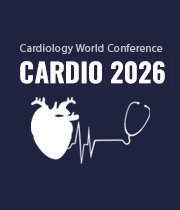Title : Miniaturized living myocardial slices derived from pediatric tetralogy of fallot specimens: A novel platform for investigating contractile performance and pharmacological interventions
Abstract:
Congenital heart disease (CHD) continues to pose significant challenges in paediatric cardiology, and Tetralogy of Fallot (ToF) stands out as a condition in need of improved translational models. Traditional in vitro and animal-based systems provide valuable insights but often fail to capture the native three-dimensional architecture, biomechanical complexity, and functional responsiveness of human myocardium key factors critical for understanding contractile mechanics and evaluating therapeutic interventions.
Living Myocardial Slices (LMS) are thin (~300 µm) viable sections of human cardiac tissue and have emerged as a novel platform for studying biomechanical profiles of myocardium under conditions that closely approximate the native state. We previously demonstrated that miniaturized LMS (mini-LMS) can be generated from adult cardiac tissues, enabling reliable measurements of contractile function and pharmacological responses even when only small tissue specimens are available.
In this study, we applied the mini-LMS technique to paediatric myocardial specimens obtained during surgical repair and reoperations of ToF. These mini-LMS maintained stable contractile properties for several days in culture, enabling detailed measurements of force generation and relaxation dynamics, and other parameters central to understanding excitation-contraction coupling. Moreover, pharmacokinetic profiles could be examined on patient-specific tissue maintaining disease phenotype. Histological and mathematical modelling confirmed that the miniaturization process preserved key biomechanical characteristics and overall tissue integrity. Moreover, we performed direct comparisons between paediatric ToF-derived mini-LMS and adult LMS both from failing hearts and from adult congenital heart disease specimens and identified distinct contractile and pharmacological response profiles among these groups.
This is the first demonstration that paediatric mini-LMS can be derived from ToF specimens and directly compared with adult-derived LMS, providing a new, physiologically relevant in vitro model to investigate disease-specific myocardial function. By establishing these differences, more targeted therapeutic strategies can be distilled and ultimately improve outcomes for children with ToF.



